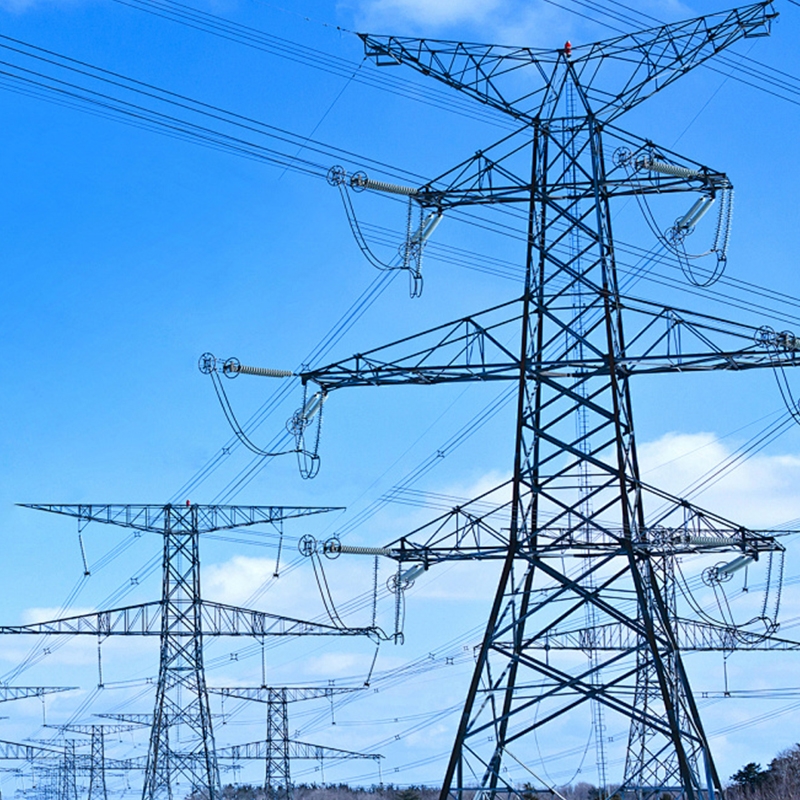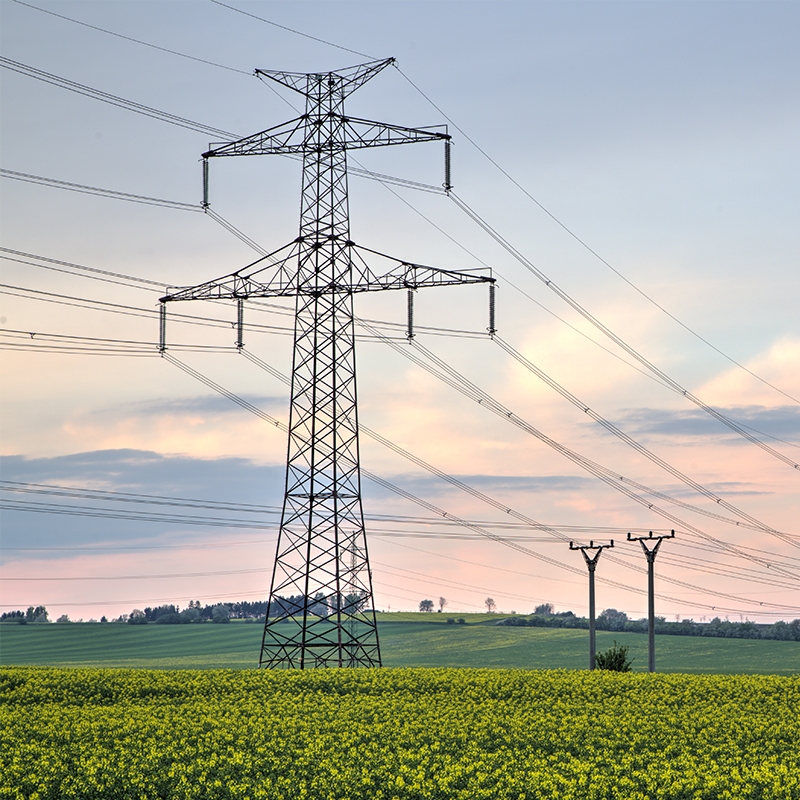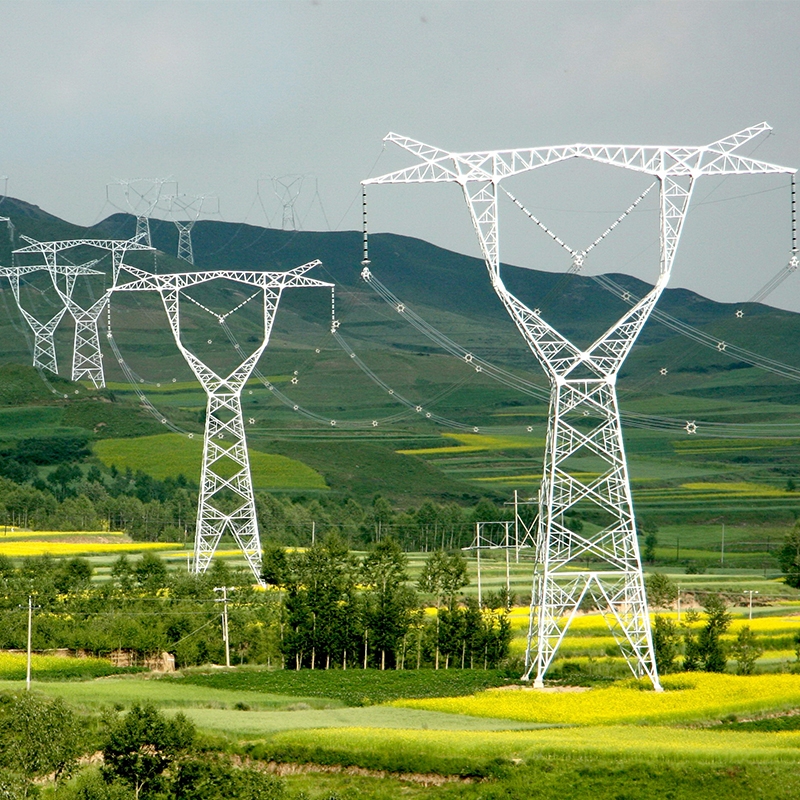Basic knowledge such as the principle and quality of transformers
Loss of the transformer
When the primary winding of a transformer is energized, the magnetic flux generated by the coil flows through the core. Since the core itself is also a conductor, an electromotive force will be induced in the plane perpendicular to the magnetic field lines. This electromotive force forms a closed circuit on the cross-section of the core and generates a current, similar to a vortex, so it is called "eddy current". This "eddy current" increases the loss of the transformer and causes the core of the transformer to heat up, raising the temperature rise of the transformer. The loss caused by "eddy current" is called "iron loss".
In addition, a large amount of copper wire is needed to wind transformers. These copper wires have resistance. When current flows through, this resistance will consume a certain amount of power. This part of the loss is often converted into heat and consumed. We call this kind of loss "copper loss". So the temperature rise of the transformer is mainly caused by iron loss and copper loss.
Due to the iron loss and copper loss in the transformer, its output power is always less than the input power. Therefore, we introduce an efficiency parameter to describe this, η= output power/input power.
The material of the transformer
To wind a transformer, we must have a certain understanding of the materials related to transformers. For this reason, here I will introduce some knowledge in this regard.
1. Core material
The core materials used in transformers mainly include iron sheets, low-silicon wafers, and high-silicon wafers. Adding silicon to steel sheets can reduce the conductivity of the steel sheets, increase the resistivity, and reduce eddy currents, thereby reducing losses. We usually refer to steel sheets with added silicon as silicon steel sheets. The quality of a transformer is closely related to the quality of the silicon steel sheets used. The quality of silicon steel sheets is typically expressed by the magnetic flux density B. Generally, the B value of black iron sheets is 6000-8000, that of low-silicon sheets is 9000-11000, and that of high-silicon sheets is 12000-16000.
2. Winding materials
Enameled wire, sand-covered wire and silk-covered wire are the commonly used materials for winding transformers, among which enameled wire is the most frequently used. The requirements for wires are good electrical conductivity, sufficient heat resistance of the insulating paint layer, and a certain degree of corrosion resistance. Under normal circumstances, it is best to use Q2 model high-strength polyester enameled wire.
3. Insulating materials:
When winding a transformer, insulating materials should be used for the isolation between the layers of the coil frame and between the windings. Generally, phenolic cardboard can be used as the material for the transformer frame, polyester film or telephone paper can be used for isolation between the layers, and yellow wax cloth can be used for isolation between the windings.
4. Impregnating materials
After the transformer is wound, it still needs to go through the final process, which is to impregnate with insulating varnish. This can enhance the mechanical strength of the transformer, improve its insulation performance and extend its service life. Generally, cresol clear varnish can be used as the impregnating material.
Identification of like-name terminals in multi-winding transformers
When using multi-winding transformers, it is often necessary to determine the like-named or like-named terminals of the leads of each winding in order to correctly connect the coils in parallel or series.
The following two points should be noted during the test:
If the step-up winding of the transformer (i.e., the winding with more turns) is connected to a battery, the meter should select the smallest range to make the pointer swing more widely, which is conducive to observation. If the step-down winding of the transformer (i.e., the winding with fewer turns) is connected to a battery, a meter with a larger range should be selected to avoid damaging the meter.
At the moment the power is connected, the pointer will deflect in a certain direction. However, when the power is disconnected, due to self-induction, the pointer will reverse in the opposite direction. If the interval between connecting and disconnecting the power supply is too short, it is very likely that only the deflection direction of the pointer at the time of disconnection will be seen, and the measurement result will be misunderstood. So after connecting the power supply, wait for a few seconds before disconnecting it. You can also measure several times to ensure the accuracy of the measurement.
A simple way to judge the quality of a Power Transformer: In addition to checking the voltage accuracy and insulation performance of a power transformer, it is also necessary to know its efficiency, load rate, heat generation, etc. The following introduces a simple discrimination method for determining the quality of a power transformer by measuring two parameter prime numbers.
Measurement of no-load current
The no-load current of a transformer refers to the primary current measured when the primary is connected to the rated voltage and the secondary is completely no-load. The product of this current and the incoming line voltage is the no-load loss, which refers to the core loss of the transformer. It is the sum of the eddy current loss and hysteresis loss of the core in an alternating magnetic field. Therefore, the smaller the no-load current of the transformer is, the better the quality of the core is, and the more reasonable the ampere-turns design is. In this case, it is generally believed that the no-load current is similar to the iron loss, and the magnitude of the no-load current reflects the magnitude of the iron loss. The no-load current of a transformer with a power of less than 10W is approximately 7 to 15mA. For a 100W transformer, an no-load current of approximately 30 to 60mA is considered normal. Transformers with large iron losses will inevitably generate more heat. If the design of the ampere-turns ratio is unreasonable, the no-load current will increase significantly, resulting in an increase in temperature rise and a shortened lifespan. The no-load current of a general toroidal transformer should be lower than that of a common plug-in transformer.
2. Determination of copper loss
The copper loss of a transformer refers to the loss caused by the direct current resistance of the primary and secondary conductors. Therefore, to measure the copper loss, simply apply the rated current to the transformer and the I2R can be measured. The testing method is as follows: First, directly short-circuit the two ends of the secondary coil of the transformer (short-circuit as many groups as there are), then connect the primary of the transformer in series with an AC ammeter, and then connect it to a 0-250V AC voltage regulator and connect it to the mains power supply. Adjust the voltage regulator from 0V until the ammeter reading is the rated current of the transformer (for example, for a 200VA transformer, the rated current is 0.9A). Use a multimeter to measure the voltage at the primary of the transformer at this time. Multiply this voltage by the rated current of the transformer to get the "copper loss" (the measurement time for copper loss should be short, otherwise the transformer will be damaged). Due to the secondary short circuit, the voltage on the primary side of the transformer must be very low. In this way, the magnetic flux of the iron core is extremely small, and the iron loss is also very small, which can be ignored. Therefore, the measured I2R is very accurate. In this test, the smaller the loss, the smaller the resistance value of the enameled wire, and the load rate of this transformer is bound to be larger.
Under normal circumstances, the sum of iron loss and copper loss for a 500W transformer should be less than 45W. As the capacity of the transformer decreases, its loss increases accordingly, because the copper loss of a small transformer is greater than the iron loss.
From the above measurements, it can be known that the smaller the sum of the open-circuit loss and the short-circuit loss of a transformer is, the better the quality of the transformer will be, the lower the temperature rise during operation will be, and the better the load rate will be. In this way, the performance of the transformer can be known in a very short time.
Related term explanation 1: Electromagnetic induction. When the magnetic flux of a certain conductor in a loop changes, an electromotive force occurs within the conductor. This phenomenon is called electromagnetic induction.
2. Self-induction: When the current in a closed circuit changes, the magnetic flux generated by this current passing through the circuit itself also changes. Therefore, an induced electromotive force is also generated in the circuit. This phenomenon is called self-induction, and this induced electromotive force is called self-induced electromotive force.
3. Mutual inductance: If two coils are brought close to each other, a portion of the magnetic flux generated by the current in the first coil will be linked to that in the second coil. When the current in the first coil changes, the magnetic flux in the link between it and the second coil also changes, generating an induced electromotive force in the second coil. This phenomenon is called mutual inductance.
4. Inductance, a general term for self-inductance and mutual inductance.
5. Inductive reactance: When alternating current flows through a circuit with inductance, the inductance has the effect of hindering the flow of alternating current. This effect is called inductive reactance, denoted as Lx, where Lx=2πfL.
6. Magnetic flux: The product of the magnetic induction intensity and the area perpendicular to the magnetic field direction is called magnetic flux, denoted by the letter φ, and its unit is Maxwell.
7. Magnetic flux density: The magnitude of magnetic flux passing through a unit area is called magnetic flux density, denoted by the letter B. Magnetic flux density and magnetic field induction intensity are numerically equal.
8. Magnetoresistance, similar in meaning to resistance, indicates the hindrance effect of a magnetic circuit on magnetic flux, denoted by the symbol Rm, with the unit of 1/ hen.
9. Magnetic permeability, also known as magnetic permeability coefficient, is a coefficient that measures the magnetic permeability of a substance, denoted by the letter μ, and its unit is revolutions per meter.
10. Hysteresis: During the repeated magnetization process of a ferromagnet, the change in its magnetic induction intensity always lags behind its magnetic field intensity. This phenomenon is called hysteresis.
11. Hysteresis loop: In a magnetic field, the relationship between the magnetic induction intensity of a ferromagnet and the magnetic field intensity can be represented by a curve. When the magnetization magnetic field changes periodically, the relationship between the magnetic induction intensity and the magnetic field intensity in a ferromagnet forms a closed line, which is called a hysteresis loop.
12. Hysteresis loss: When a ferromagnet is placed in an alternating magnetic field, due to the hysteresis phenomenon, some power loss occurs, causing the ferromagnet to heat up. This kind of loss is called hysteresis loss.
13. Electromagnetic induction: When the magnetic flux of a certain conductor in a loop changes, an electromotive force occurs within the conductor. This phenomenon is called electromagnetic induction.




